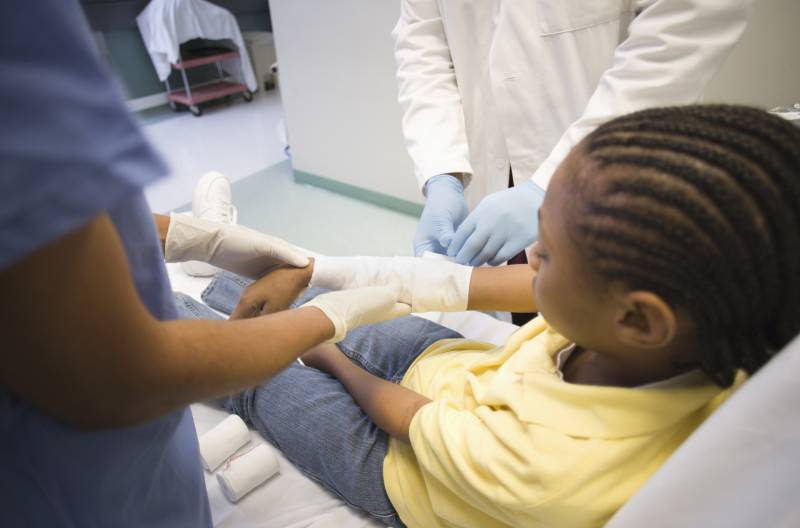Imagine your child has broken a bone. You head to the emergency department, but the doctors won’t prescribe painkillers. This scenario is one that children of color in the U.S. are more likely to face than their white peers, according to new findings published in The Lancet Child & Adolescent Health.
Researchers reviewed dozens of recent studies looking at the quality of care children receive across a wide spectrum of pediatric specialties. The inequities are widespread, says Nia Heard-Garris, a researcher at Northwestern University and a pediatrician at Lurie Children’s Hospital of Chicago, who oversaw the review.
“No matter where you look, there are disparities in care for Black Americans, Hispanic, Latinx, Asian Americans — pretty much every racial and ethnic group that’s not white,” she says.
Heard-Garris says there are lots of examples of inequalities across specialties. The review found children of color are less likely to get diagnostic imaging and more likely to experience complications during and after some surgical procedures. They face longer wait times for care at the emergency room, and they are less likely to get diagnosed and treated for a developmental disability.
The strongest disparity evidence was found in pain management. Kids of color are less likely than their white peers to get painkillers for a broken arm or leg, for appendicitis or for migraines. “Those are some really severe examples of how this plays out,” says Dr. Monique Jindal, an assistant professor at the University of Illinois Chicago and one of the authors of the review.



9(MDAxOTAwOTE4MDEyMTkxMDAzNjczZDljZA004))